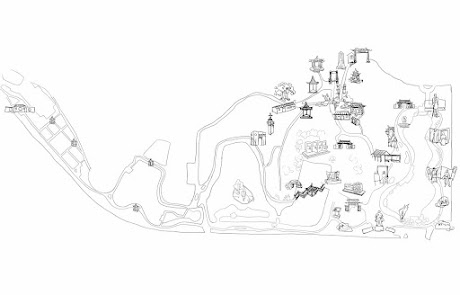8.2 MAP
The park should have a meticulously designed layout, mimicking natural landscapes including mountains, water bodies like lakes and streams, etc. The layout of the garden often reflects the aesthetic concept of "distant views and close views" and "winding paths leading to secluded spots," allowing visitors to experience different scenery while strolling. Traditional Chinese parks typically feature artificial hills, ponds, or streams, carefully arranged to showcase the beauty of natural landscapes. These water bodies often contain lotus flowers, water lilies, and other aquatic plants, adding a sense of tranquility and elegance. There will be pavilions and towers in the park, serving not only as resting places but also as vantage points for enjoying the scenery. The architectural styles of these pavilions and towers vary, some imitating ancient designs while others adopting modern styles, but all should harmonize with the natural landscape. A variety of plants, including traditional potted plants, flowers, and trees, will be found in the park. These plants not only provide visual enjoyment for visitors but also constitute important components of the garden landscape. Traditional Chinese parks often incorporate cultural elements such as ancient poems, stone inscriptions, sculptures, etc. These cultural elements not only enrich the park's connotation but also allow visitors to appreciate the charm of traditional Chinese culture during their visit. In addition to sightseeing, the park should also provide leisure facilities such as tea houses, pavilions, etc., allowing visitors to relax and experience a leisurely pace of life.


Comments
Post a Comment